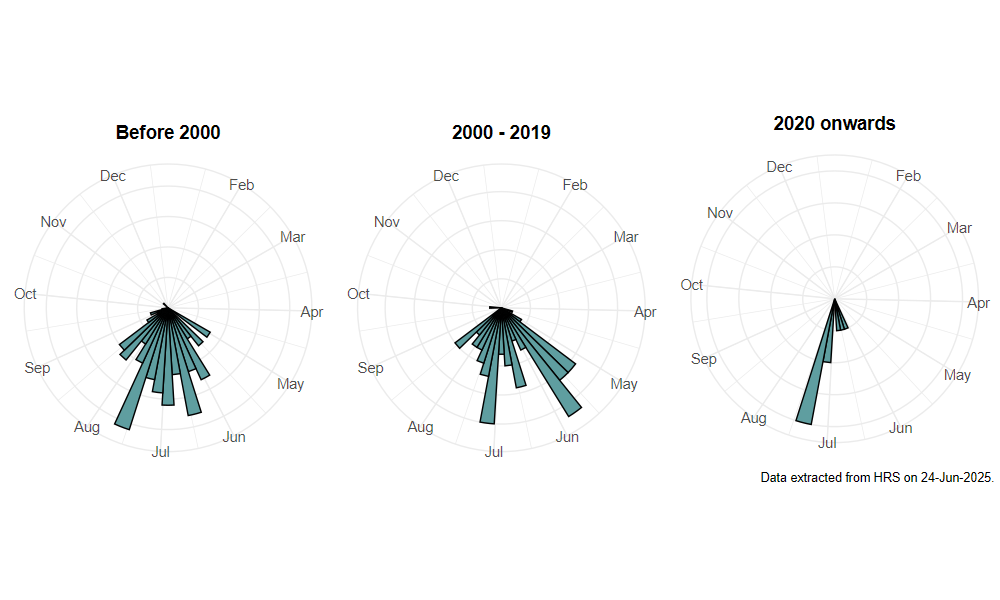Platycheirus immarginatus (Zetterstedt, 1849)
Identification
Identification difficulty = 4. ![]()
![]() according to Ball & Morris, 20241
according to Ball & Morris, 20241
Biology
The larva is predaceous on the aphid Trichocallis cyperi, although there are a variety of non British records relating to a range of other aphids that may actually relate to laboratory breeding projects. The adults occur within rank low vegetation and may be found visiting the flower heads of sedges Carex sp. and grasses in keeping with other related species. This is a wetland species that occurs in coastal grazing marshes, tidal rivers and other brackish marshes. Northern inland locations have a rich fringe of sedges on the banks of rivers and lakes.
Flight period
The following plots show the number of unique records per week excluding those reported to be of immature stages.

Status
Lower Risk (Nationally scarce) - Ball & Moris, 20142. Notable - Falk, 19913.
Distribution
A difficult species to identify, especially the separation from P. perpallidus, and the characters given by Stubbs & Falk (2002)4 and van Veen (2004)5 to separate females of these two species are not reliable. The records, taken at face value, include many from inland locations. However, if only records based on males are accepted then it appears to be an entirely coastal species. It has been claimed to occur at inland localities, notably in the Spey Valley in Scotland, but we have yet to see a male specimen taken inland.

Trends
The following plots show the Frescalo TFactor vs year and a map of the rescaled frequency (all records) for the species.
-
Ball, S., & Morris, R. (2024). Hoverflies of Britain and Ireland. WILDGuides (3rd ed.). Oxford: Princeton University Press. ↩
-
Ball, S., & Morris, R. (2014). A review of the scarce and threatened flies of Great Britain. Part 6: Syrphidae. ( No. 9). Species status (pp. 1–130). Peterborough: JNCC. ↩
-
Falk, S. (1991). A review of the scarce and threatened flies of Great Britain. ( No. 39). Research and Survey in Nature Conservation (pp. 1–194). Peterborough: NCC. ↩
-
Stubbs, A., & Falk, S. (2002). British Hoverflies An Illustrated Identification Guide (2nd ed.). Reading: BENHS. ↩
-
van Veen, M. (2004). Hoverflies of Northwest Europe: identification keys to the Syrphidae. Utreht: KNNV Publishing. ↩